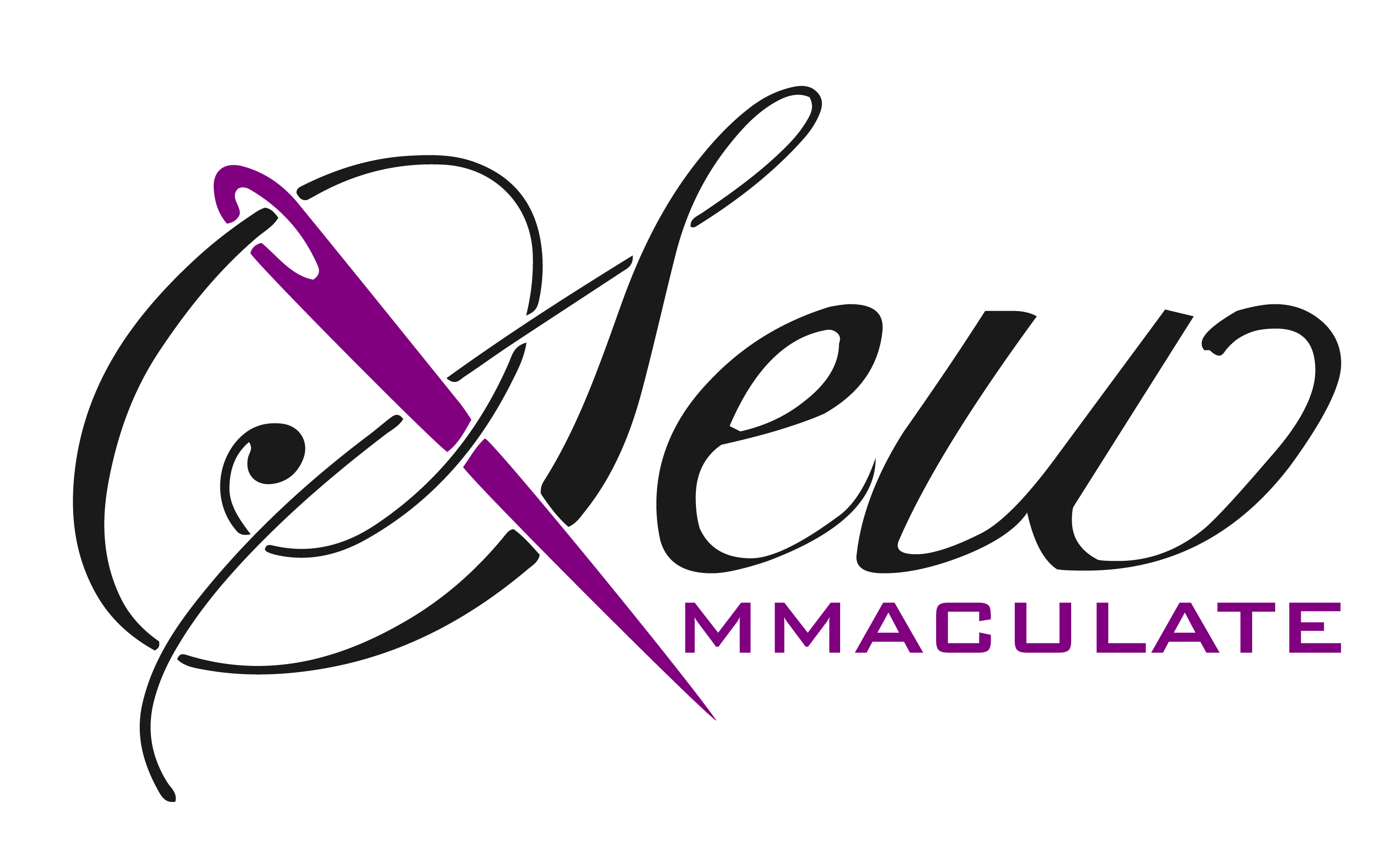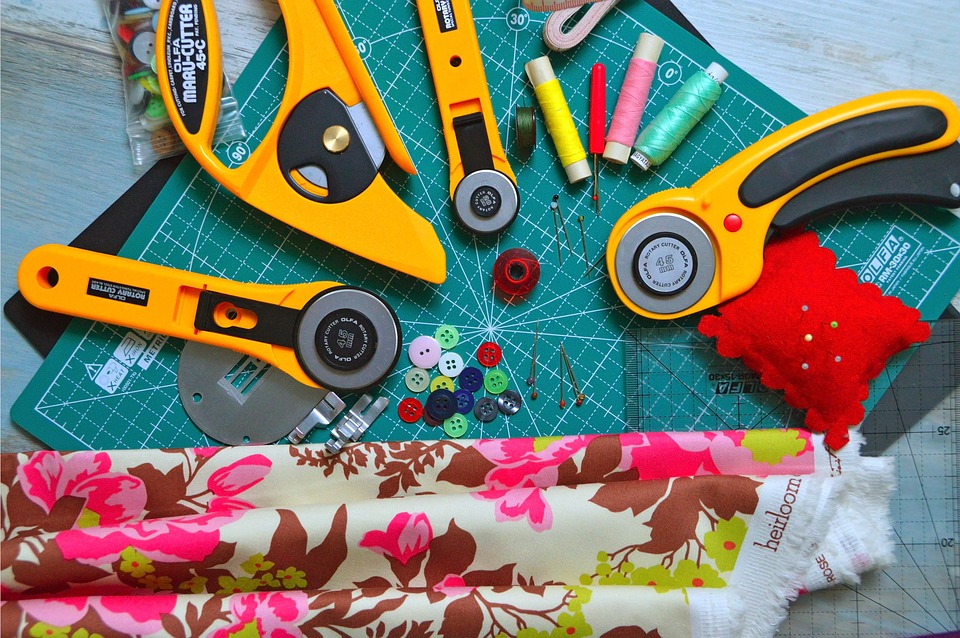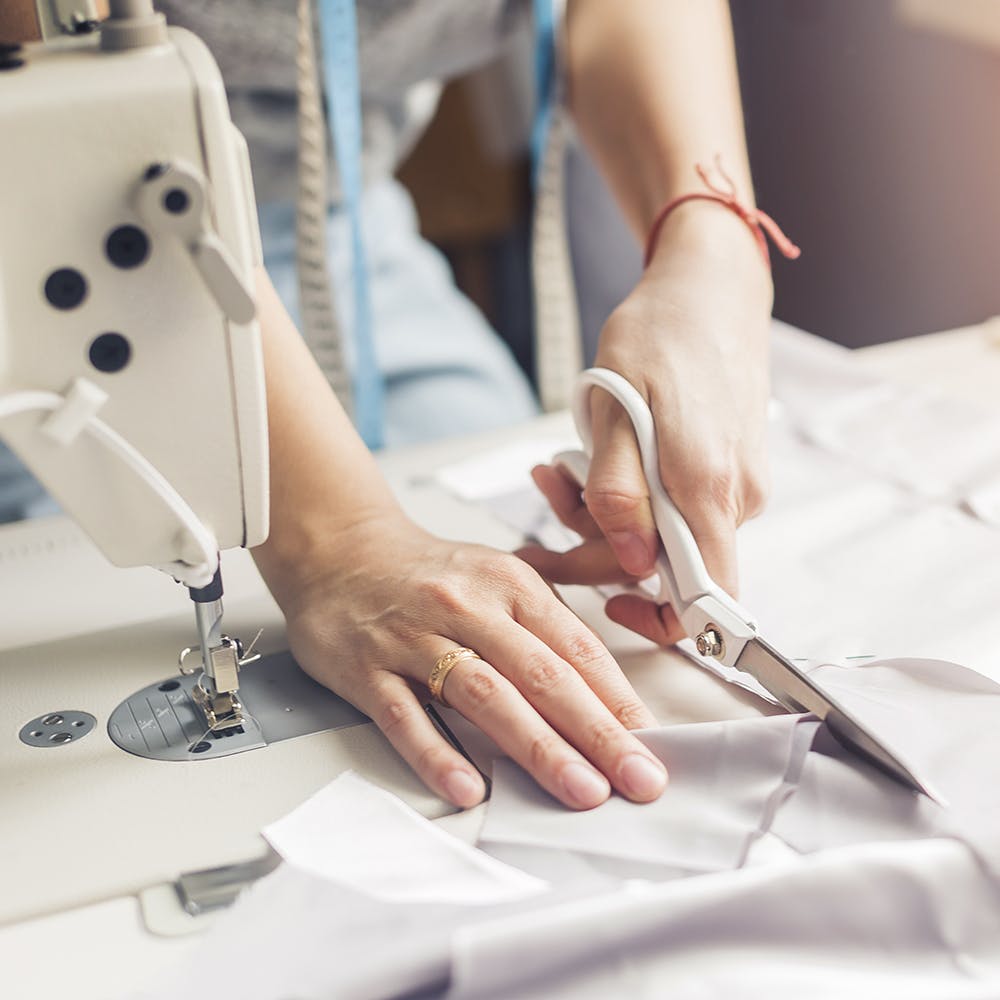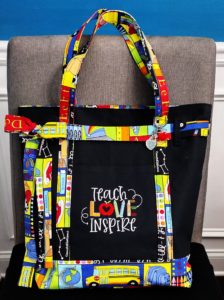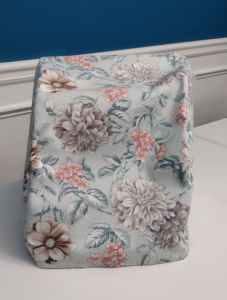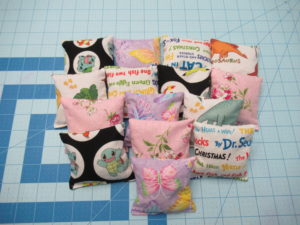When you are new to sewing there are a lot of terms that you will come across and think to yourself, “What the heck is that?” Not knowing basic sewing terminology will make sewing seem more difficult than it is. But trust, some of these terms you will learn along the way and others you may not ever need.
Sewing Terminology Rundown
SEWING MACHINE TERMS
- Bobbin– The small circular spindle that thread is wound onto.
- Bobbin winder shaft– Part of a sewing machine that holds the bobbin as you thread it.
- Cover face– Covering that protects parts inside your sewing machine.
- Extension table– Removable table that is designed to give extra room while sewing.
- Feed dog– Sewing machine “teeth’ that moves the fabric as it is sewn.
- Foot– The part of a sewing machine that presses down and secures the fabric as it moves.
- Serger– A special sewing machine that stitches seams and cuts of excess fabric, creating a finished look.
- Spool– Cylinder cone that holds the thread.
- Thread cutter– Small knife part of a sewing machine that cuts the ends of thread.
- Walking foot– Special attachment that allows the machine to evenly sew through multiple layers of fabric.
COMMON SEWING TOOLS
- Awl– Tool used to make eyelets in fabric.
- D Ring– A “D” shaped ring used in accessories to attach handles and closures.
- Elastic– Useful sewing material that can be sewn directly onto or placed into fabric to provide fullness.
- Ham– Stuffed, cloth covered tool used by tailors to crease corners and collars, so they don’t lose shape.
- Hook & eye– Closure with a small hook on one side and a loop on the other that joins together.
- Marking tools– chalk, pens and special pencils that are used to mark fabric without damage or staining.
- Notion– Any item used for sewing that is not fabric or a machine part.
- Pattern– Set of sewing instructions with pictures that layout how to assemble a sewn item.
- Pattern weights– Weights used to hold down paper patterns. (Alternative to pins)
- Pinking Shears– Specialized scissors with serrated edges that are used to create zigzags as a way to prevent fraying.
- Pins– Small pieces of metal wire used to hold fabric together.
- Rotary cutter– Sewing tool with a circular blade that is used to cut fabric as you roll.
- Seam Guage– Ruler with a special slider that is used to mark fabric.
- Seam ripper– Tool used to undo stitches without damaging fabric.
- Stabilizer– Underlaying piece of material that is fused or sewn in for support.
- Tracing paper– Paper used with a tracing wheel that has ink on one side to mark fabric.
- Trim– Embellishments used on the edges of garments for a decorative look.
- Velcro– (Hook & Loop) is an easy fastener that can be directly sewn onto fabric for a closure.
SEWING TERMINOLOGY
- Applique– This is an embellishment that is typically used when embroidering fabrics.
- Arm scythe– The armhole you attach a sleeve to.
- Backstitch– Reverse stitch used to secure seams on a garment.
- Baste– Long, loose stitches that are temporarily used to hold fabric together.
- Blind hem– An invisible stitch used to on hems to prevent being seen from the outside.
- Bodice– Upper part of a garment that includes shoulders down to waist.
- Bonding– Joining something together with glue or similar adhesive.
- Buttonhole– A cut in fabric that’s been securely stitched, just big enough for a button to pass through.
- Capped Sleeve– A short sleeve that stops before your underarm.
- Clip– notches on seam allowances that allow corners and curves to come out better.
- Darn– Filling a hole by stitching back and forth until its closed.
- Dart– A V-shaped adjustment that provides more or less fullness in a pattern.
- Edgestitch– A stitch sewn 1/8 inch from the edge of a seam.
- Embellishment– Adding special decorations to sewing projects.
- Embroidery– A decorative stitch used to create a design on a piece of fabric.
- Empire waist– A waistline on a garment that falls under the bust, but higher than the natural waist.
- Finger press– Using the force and heat of your fingertips to crease a fabric instead of an iron.
- Finishing a seam– To prevent unraveling of seams by adding hems and binding.
- Free motion– sewing done with the feed dogs down.
- Grading– Trimming the seam allowance to reduce bulk.
- Guild– A group of people who discuss and practice sewing.
- Hemline– Lowest part of the garment once it is sewn together.
- Inseam– Vertical seam distance between the legs on pants.
- Overcast– Stitching over the seam to prevent unraveling.
- Raveling– Technique used to give the edge of a fabric a fringed look.
- Rise– Measurement between the crotch and the waist on pants.
- Running stitch– Stitch made by running back and forth through your fabric.
- Seam allowance– The distance between the edge of a garment and the stitches.
- Straight stitch– Stitches made using a straight line.
- Tack– A temporary stitch used to hold fabric together that will be removed after final stitching.
- Tension– Pressure placed on your needle and bobbin thread by your machine.
- Topstitch– Stitches placed on the topside of a garment, usually for decoration.
- Understitch– Stitches that prevent facings and linings from rolling onto the right side of fabric.
- Whipstitch– Running stitch used to hold two pieces of fabric together.
- Zigzag Stitch- Stitch that goes one way then the other making a z pattern and provides a finished seam or decorative look.
